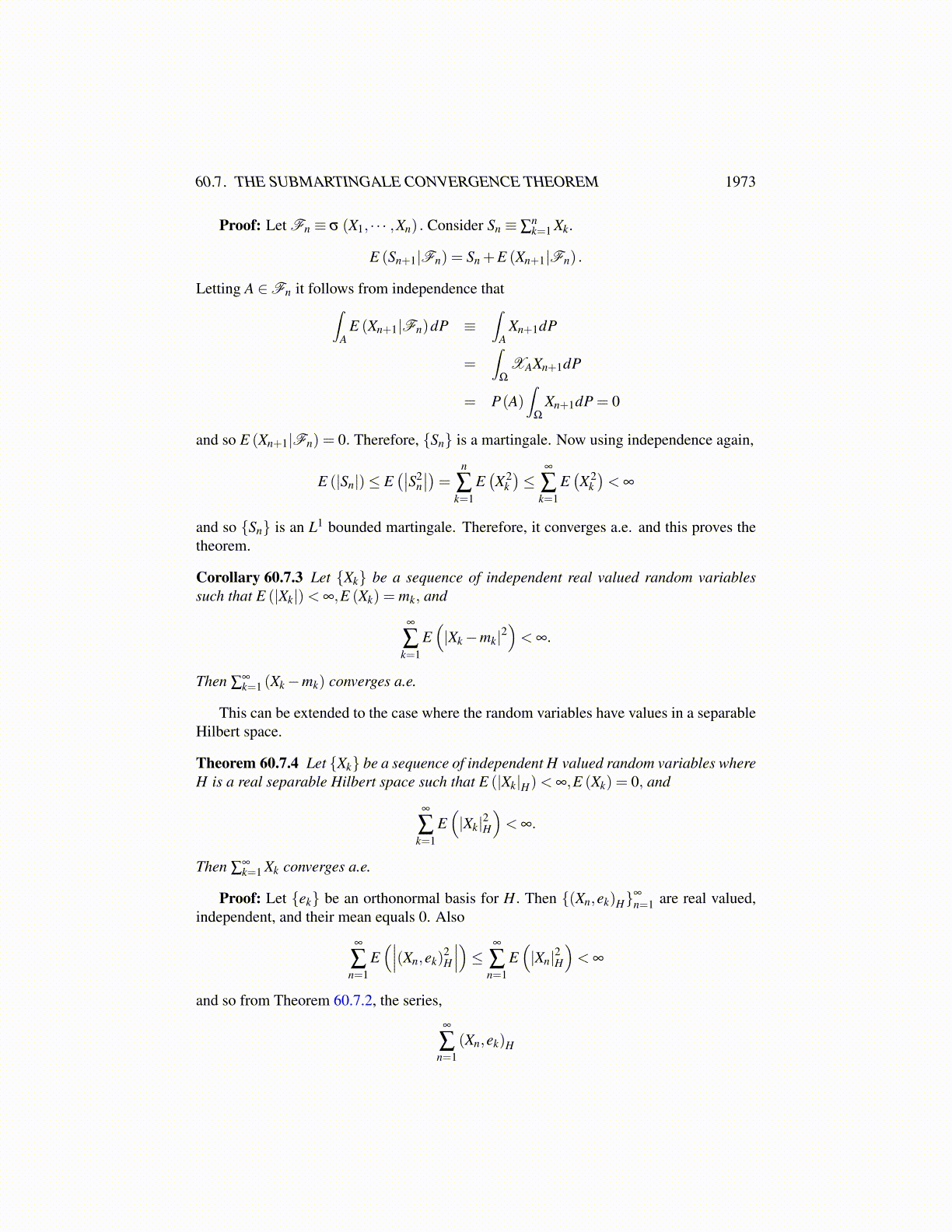
60.6. SUBMARTINGALE CONVERGENCE THEOREM 1973
=
odds − evens︷ ︸︸ ︷n−1
∑k=0
((XT ′2k+1
−a)+−(
XT ′2k−a)+)
+
evens − odds︷ ︸︸ ︷n
∑k=1
((XT ′2k−a)+−(
XT ′2k−1−a)+)
.
Now denote by UN[a,b] the number of upcrossings. When T ′k is such that k is odd,
(XT ′k−a)+
is above b− a and when k is even, it equals 0. Therefore, in the first sum XT ′2k+1−XT ′2k
≥b− a and there are UN
[a,b] terms which are nonzero in this sum. (Note this might not be nbecause many of the terms in the sum could be 0 due to the definition of T ′k .) Hence
(XN−a)+− (X0−a)+ = (XN−a)+
≥ (b−a)UN[a,b]+
n
∑k=1
((XT ′2k−a)+−(
XT ′2k−1−a)+)
. (60.6.15)
Now UN[a,b] is a random variable. To see this, let Zk (ω) = 1 if T ′2k+1 > T ′2k and 0 otherwise.
Thus UN[a,b] (ω) = ∑
n−1k=0 Zk (ω) . Therefore, it makes sense to take the expected value of both
sides of 60.6.15. By the optional sampling theorem,{(
XT ′k−a)+}
is a submartingale andso
E((
XT ′2k−a)+−(
XT ′2k−1−a)+)
=∫
Ω
E((
XT ′2k−a)+|FT ′2k−1
)dP−
∫Ω
(XT ′2k−1
−a)+
dP≥ 0.
Therefore,
E((XN−a)+
)≥ (b−a)E
(UN[a,b]
). (60.6.16)
This proves most of the following fundamental upcrossing estimate.
Theorem 60.6.9 Let {Xn} be a real valued submartingale such that Xn is Fn measurable.Then letting UN
[a,b] denote the upcrossings of {Xn} from a to b for n≤ N,
E(
UN[a,b]
)≤ 1
b−aE((XN−a)+
).
Proof: The estimate 60.6.16 was based on the assumption that X0 (ω) ≤ a. If this isnot so, modify X0. Change it to min(X0,a) . Then the inequality holds for the modifiedsubmartingale which has at least as many upcrossings. Therefore, the inequality remains.
Note this theorem holds if the submartingale starts at the index 1 rather than 0. Justadjust the argument.